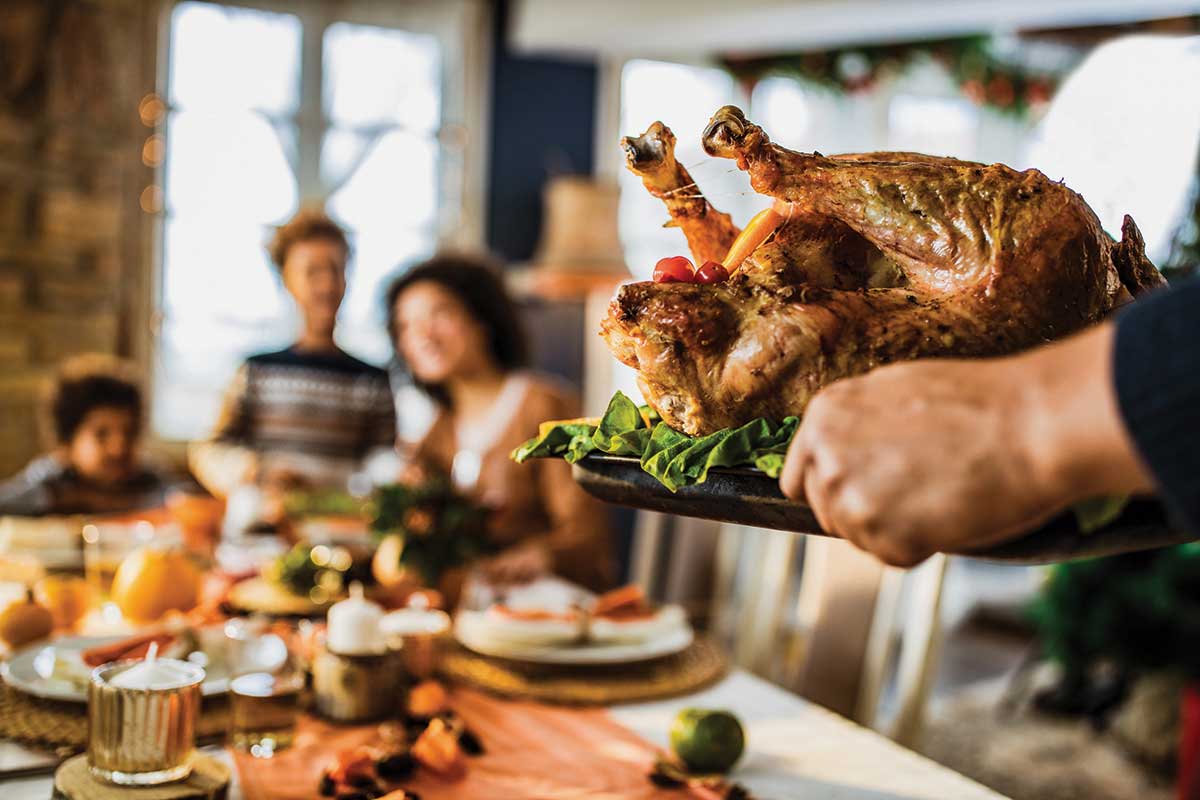You can almost smell it, can’t you? A golden brown, perfectly roasted turkey with stuffing. Mashed potatoes with gravy. Zesty cranberry sauce and green bean casserole. Pumpkin pie. Pecan pie. Cherry pie.
It’s almost Thanksgiving, and that can mean a big jump in your electric usage. It can mean dishwasher load after dishwasher load of plates and an oven that’s constantly on. It could mean your refrigerator door is often open as family members search for hidden goodies. If you have company, more people in the house means your water heater may struggle to keep up with all the showers and laundry. Yep, Turkey Day can be a strain not only on your beltline but also on your electric bill. This holiday season, opt for these tips when you’re cooking your feast—you’ll enjoy a meal and some energy savings.
Oven Tips
Turkey is traditionally roasted for hours. Because it’s a long, slow cook, there’s no need to preheat your oven—even when the recipe suggests it. This also holds true for a holiday ham. In fact, unless you’re baking breads or pastries, you may not need to preheat the oven at all.
Don’t open the oven door to peek inside. Instead, use the oven light and check the cooking status through the oven window. Opening the oven door lowers the temperature by as much as 25 degrees, increasing cooking time.
As long as your oven is on, cook several items at the same time. Just make sure you leave enough room between items for heat to circulate evenly.
In an electric oven, you can turn the heat off several minutes before your food is fully cooked, as long as the door remains closed.
If you use glass or ceramic pans, you can turn your oven temperature down by 25 degrees.
If your oven has a self-cleaning feature, consider using it immediately after baking your meal to take advantage of the residual heat. Stovetop Tips
When cooking on top of your range, match the size of the pan to the burner. More heat will get to the pan, and less will be lost to surrounding air. A 6-inch pan on an 8-inch burner will waste more than 40% of the energy!
Clean burners and reflectors provide better heating while saving energy.
Other Ways To Cook
Fast and efficient microwaves use far less energy than ovens, and they don’t heat up your kitchen.
Slow cookers are perfect for busy families and can cook a whole meal for about 17 cents worth of electricity.
If you’re baking or broiling small items, a toaster oven—a fraction of the size of a traditional range—is the ideal choice.
Electric skillets can do everything a skillet on the stove can do, and they can double as trivets.
Refrigerator Tips
Refrigerators and freezers can get a real workout at Thanksgiving. If you’ve already invested in Energy Star-rated versions, that’s great, but they still remain one of the largest energy consumers in your house.
Keep the doors closed as much as possible; leaving them open means your fridge or freezer has to work even harder to keep food cool.
It’s easy to keep your fridge and freezer full at Thanksgiving. It’s also more energy efficient. The mass amount of cold items inside will help your fridge recover each time the door is opened and shut; however, don’t cram it so full that the cold air can’t circulate.


